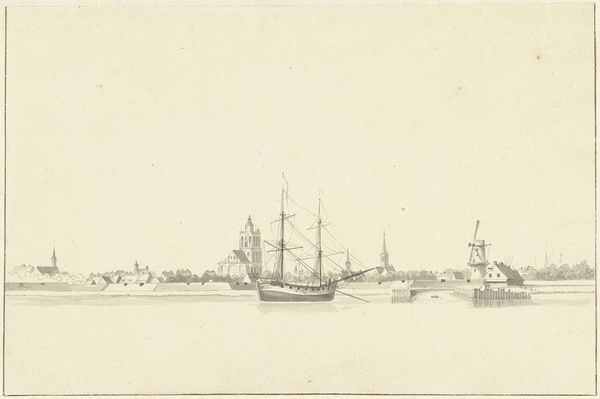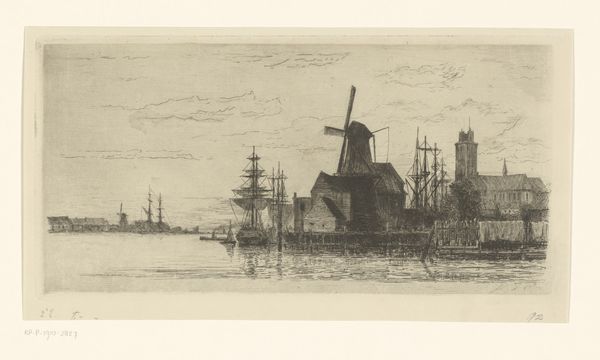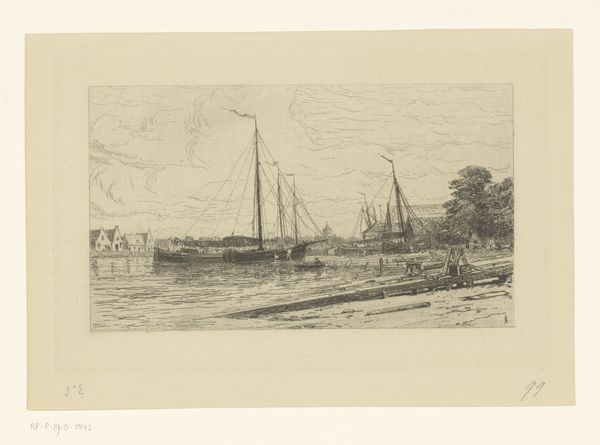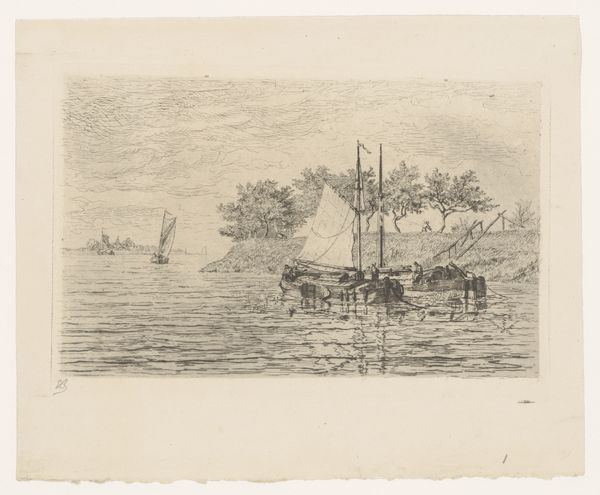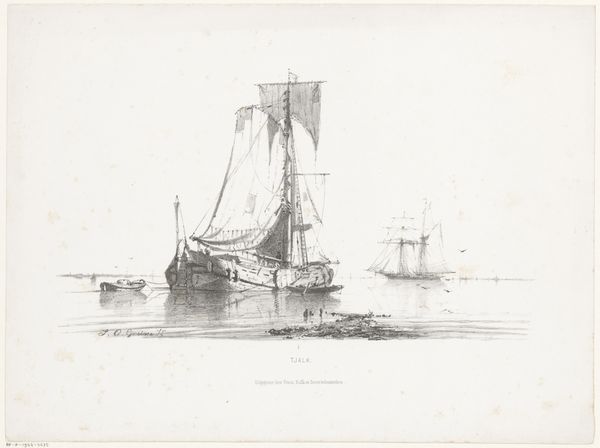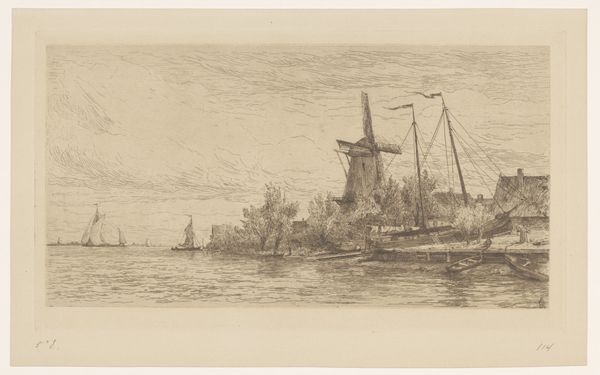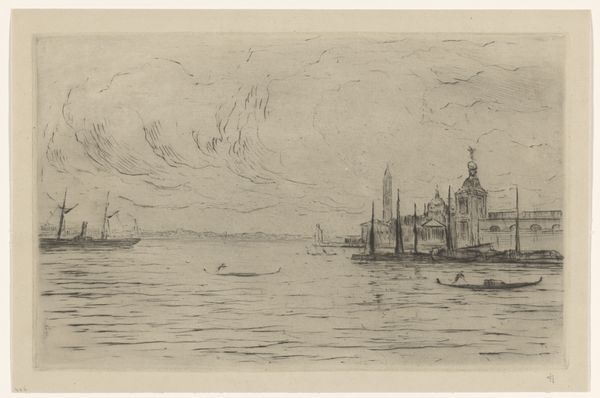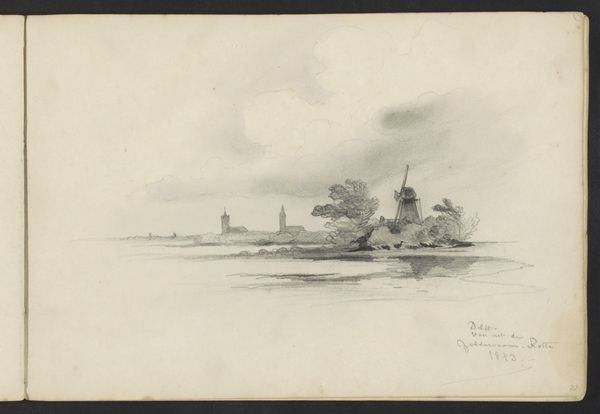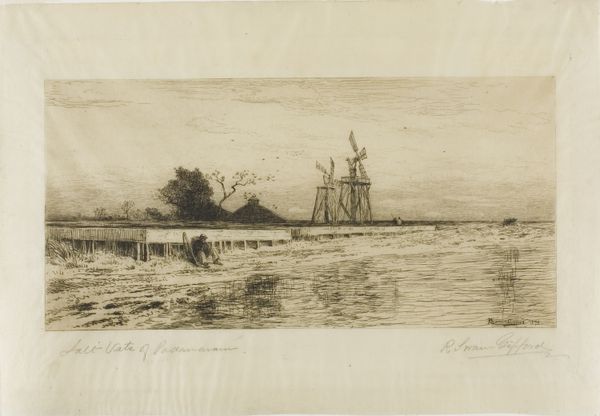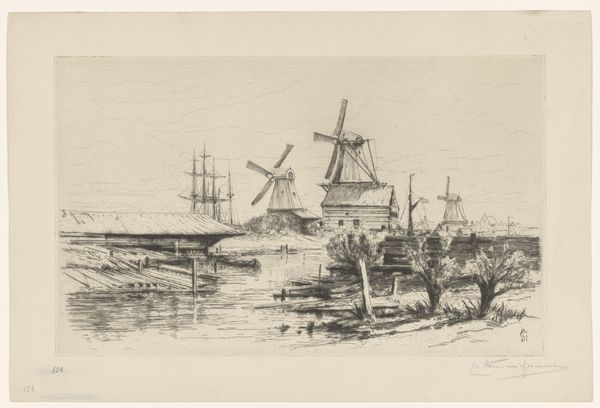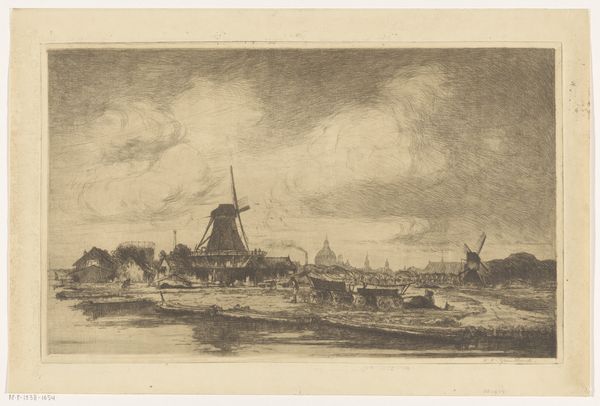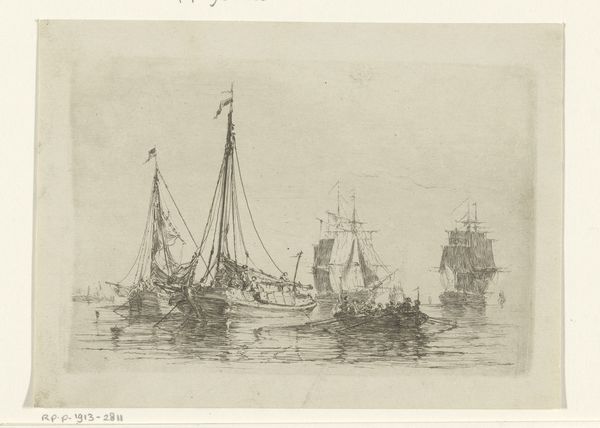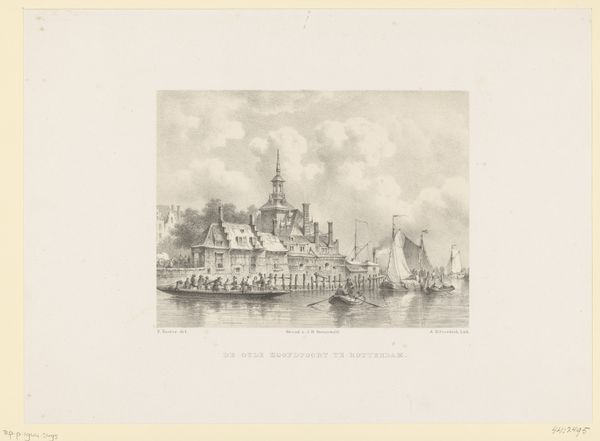
#
landscape illustration sketch
#
light pencil work
#
photo restoration
#
wedding photography
#
light coloured
#
old engraving style
#
old-timey
#
watercolour illustration
#
vignette lighting
#
warm natural lighting
Dimensions: height 128 mm, width 268 mm
Copyright: Rijks Museum: Open Domain
Editor: So, here we have Carel Nicolaas Storm van 's-Gravesande's "Le village d'Overschie," from around 1877, held at the Rijksmuseum. It looks like it's a pencil drawing or maybe an etching? There's such a quiet, dreamlike quality to the scene. What stands out to you when you look at this work? Curator: What I find fascinating is how seemingly simple landscapes often function as potent cultural carriers. Here, we see Overschie, not just as a physical location, but as a carefully constructed image imbued with the values of Dutch identity around that time. Notice the church spire? Editor: Yes, it's the highest point in the composition, very prominent. Curator: Exactly. For centuries, church spires served not only as religious symbols but as landmarks, testaments to the community’s enduring faith and a visible representation of established order. Also, look at the boats; what do they tell you? Editor: Well, they're clearly central to the village's life… fishing or trade, probably. Curator: Precisely. Waterways are highways and life lines in the Netherlands, intrinsically linked to trade, exploration and the famous Dutch mercantile spirit. ‘s-Gravesande isn't merely depicting a village; he is invoking a set of culturally resonant symbols – faith, industry, and a connection to the water that collectively define a certain perception of Dutch identity. How do you think this symbolism might have resonated with viewers in the late 19th century? Editor: I guess it offered a comforting and familiar vision of their world, perhaps reaffirming traditional values during a period of rapid change. I hadn’t considered how much the placement of those symbolic elements mattered! Curator: These compositions subtly shape and reinforce societal values. I think it is important to consider, then, how such landscapes continue to shape our own perceptions of history and cultural identity today. Editor: That's given me a lot to think about! I'll definitely look at landscapes differently now.
Comments
No comments
Be the first to comment and join the conversation on the ultimate creative platform.
